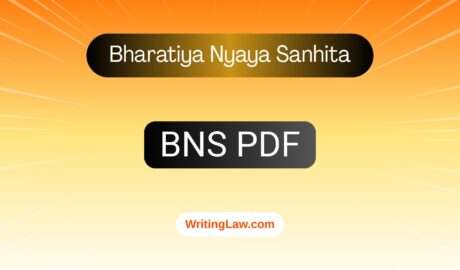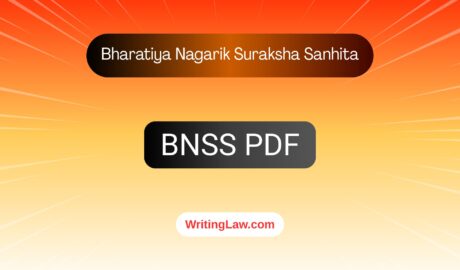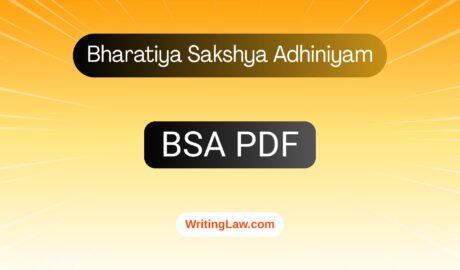
Hearsay is the information that a person declares given by someone else, i.e. he himself did not see, hear or perceive such information.
According to section 60 of the Indian Evidence Act, oral evidence must be direct.
The word direct refers to a fact which can be:
- Seen– The evidence of such a fact must be given by a witness who saw it.
- Heard– The evidence of such fact must be given by a witness who heard it.
- Perceived– The evidence of such fact must be given by a witness who perceived (become aware of, recognise) it.
- If it refers to an opinion or grounds, it must be evidence of the person who holds that opinion.
So, the oral evidence that is indirect is inadmissible, and this is the rule of exclusion of hearsay.
Hearsay evidence is used in contradiction to direct evidence. Hearsay evidence doesn’t derive its value from the credit given to the witness himself.
The word hearsay is not used in the Indian Evidence Act as it is considered inaccurate and vague.
Related: What Is Hearsay Evidence?
Reasons Why Hearsay Is Excluded
These are the reasons why hearsay evidence is excluded:
- The person giving hearsay evidence doesn’t feel any responsibility, as the person has an opportunity to escape court proceedings.
- As there is repetition, the truth is diluted and diminished.
- There is a scope of fraud.
- Such a person is not exposed to the danger of prosecution of perjury (the offence of willfully telling an untruth or making a misrepresentation under oath).
- The testimony is not given on oath, as the person giving hearsay is not the original source.
- It is not subject to cross-examination.
- There are chances of inaccuracy, fabrication and modification.
Exceptions to Hearsay Evidence
Even though the Hearsay evidence is not admissible, the rule is not absolute and has some exceptions, which are as follows:
Let us learn more about them.
1. Res Gestae
Section 6 of the Indian Evidence Act deals with Res Gestae. This section renders relevant facts which form part of the same transaction as the fact in the issue. Even Hearsay statements are admissible under the section if they form part of the transaction.
In Sukhar vs State of UP (1999), the Supreme Court held that section 6 of the Indian Evidence Act is an exception to the ground rule where the Hearsay evidence becomes admissible.
In Javed Alam vs State of Chhattisgarh & Anr (2009), the court held that section 6 of the Indian Evidence Act is an exception to the rule of evidence that Hearsay evidence is not admissible.
Related: What is Res Gestae Under the Evidence Act?
2. Admission
Admission has been defined under section 17 to 23 of the Indian Evidence Act. Admission is a statement that may be oral or documentary, which suggests any inference to any fact in issue or relevant fact. It is a prior statement which adverse to a person’s interest. It usually relates to civil transactions.
In Sahoo vs State of UP, the Supreme Court said that admissions and confessions are exceptions to the Hearsay rule.
Extrajudicial admission can be proved through the person to whom such statements were made.
Related: Admission Under Evidence Act.
3. Confession
Confession has been discussed under sections 24 to 30 in the Indian Evidence Act. It is a statement made by an accused as an acknowledgement of guilt in a criminal proceeding.
The probative value of confession does not depend upon its communication to another. Just like other evidence, they can be admitted only for drawing an inference of truth.
You May Like: What Is Retracted Confession?
4. Dying Declaration
Dying declaration is discussed under section 32(1) of the Indian Evidence Act. It is a statement made by a person who is dead, regarding relevant fact, as to the cause of his death or the circumstances of the transaction that resulted in his death.
Dying declaration is based on the maxim ‘Nemo mortiturus praesumitur mentire‘, which means that a man will not meet his maker with a lie in his mouth.
In many cases, this is the only evidence, and it becomes necessary to accept the same to meet the ends of justice.
In Ram Bihari Yadav vs State of Bihar (1998), the court held that even though the dying declaration is indirect evidence being a species of hearsay, yet it is an exception to the general rule against admissibility.
Must See: What Is Dying Declaration Under the Indian Evidence Act
5. Evidence in the Former Proceeding
Section 33 of the Indian Evidence Act deals with evidence in the former proceeding. If a person makes a statement in a judicial proceeding and afterwards:
- the person is dead, or
- cannot be found, or
- is incapable of giving evidence, or
- is kept out of the way, or
- such a person’s presence cannot be obtained without unreasonable delay or expense, and
- if the fact stated by such a person becomes relevant at a later stage of the same judicial proceedings or subsequent proceedings,
Then that previous statement can be proved without calling that person as a witness.
6. Proviso to Section 60
The proviso to section 60 of the Indian Evidence Act provides that in case of expert opinion and the ground on which such opinion has been formed, indirect evidence can be given if the following conditions are satisfied:
- There should be expert opinion under section 45 or 45A of the Indian Evidence Act.
- Such opinion must be expressed in any treatise.
- Such treatise must be offered for sale.
- The presence of an expert is not feasible.
In such a case, opinion or ground may be proved through treatise.
Read Next:
1. When Will the Court Take the Help of Expert Opinion?
2. What Is Patent and Latent Ambiguity in Indian Evidence Act
3. What Is the Doctrine of Restitution in Civil Procedure Code
- What Is a Foreign Judgement and When It’s Not Binding in India - 26th July 2022
- What Are Second Appeals Under Civil Law - 23rd June 2022
- Civil Appeal as Per the Civil Procedure Code - 12th June 2022











